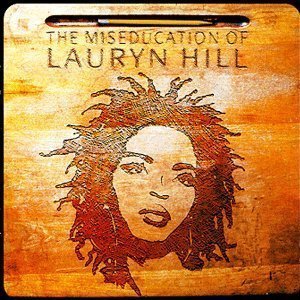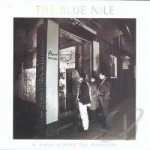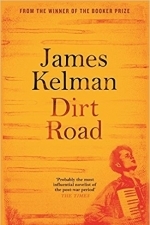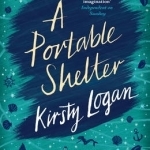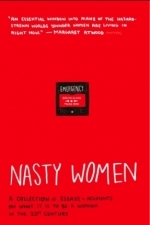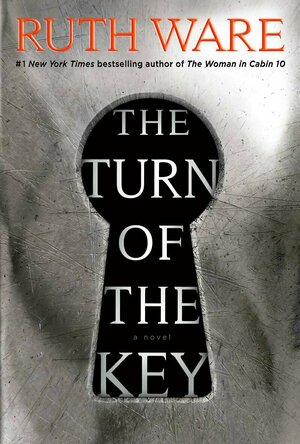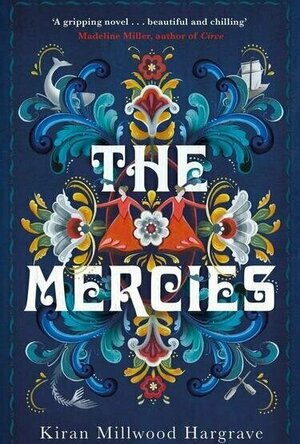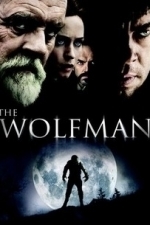Search
Search results
Emeli Sande recommended track Tell Him by Lauryn Hill in The Miseducation of Lauryn Hill by Lauryn Hill in Music (curated)
Shirley Manson recommended Walk Across the Rooftops by The Blue Nile in Music (curated)
James Dean Bradfield recommended Steeltown by Big Country in Music (curated)
Eilidh G Clark (177 KP) rated Dirt Road in Books
May 13, 2017
Kelman is an expert in understanding people
Kelman’s new novel Dirt Road is story that takes both characters and reader on a journey right from the outset, but the journey is more than it seems. The novel begins in the West coast of Scotland where we learn that Murdo - a sixteen-year-old boy - and his father Tom are mourning the death of their mother/wife and sister/daughter. Searching for solace, they embark on a journey to Alabama, U.S.A to spend time with Uncle John and Aunt Maureen. For Murdo, family is just a happy memory, a moment in time captured in a photograph, ‘The family was four and not just him and Dad’, whilst for Tom, family is the bond that holds them together. Throughout the journey, Tom strives to guide his son and keep him on ‘the right path’, yet Murdo, as we will learn, has a path of his own to find. Stifled by the fathers influence, the boy has a tendency to stray, thus when they reach Allentown Mississippi, Murdo stumbles upon a family of musicians led by Zydeco performer Queen Monzee-ay. Murdo is as drawn to music as his father is to family, the boy himself is an accomplished accordion player, and when he is offered an opportunity to play a set with Queen Monzee-ay in two weeks’ time, we watch as the road between father and son diverges and choice and risk becomes the key plot in the story.
While this may appear a simple story line, Kelman’s exploration into the fragmented relationship between father and son gives the reader an honest analysis of family and grief. The third person narrator, with bursts of free indirect discourse from Murdo, allows the reader both an internal and external insight into the constraints of family. This parallel leaves the reader feeling uncomfortable, yet with a conflicting heart. This is Kelman’s unique writing style at its best.
Dirt Road is more than a novel of grief and family relationships though; it is a novel of risk, of following new paths with uncertainties, about leaving behind the familiarities and safety of the past and following the heart. It is about deep connections; for Murdo this is through music and the feeling of freedom that he associates with music, whilst for the other characters it is about cultural connections and Scottish ancestry. Kelman’s clever use of parallels shows the reader the intensity of human connections whilst suggesting that change and progression is possible. This great novel will linger in your thoughts for weeks after you put it down, and it brings to mind a poem by Robert Frost, The Road Not Taken
I shall be telling this with a sigh
Somewhere ages and ages hence:
Two roads diverged in a wood, and I—
I took the one less traveled by,
And that has made all the difference.
For the full poem visit (https://www.poetryfoundation.org).
Dirt Road by James Kelman
Canongate Books (14 July 2016)
While this may appear a simple story line, Kelman’s exploration into the fragmented relationship between father and son gives the reader an honest analysis of family and grief. The third person narrator, with bursts of free indirect discourse from Murdo, allows the reader both an internal and external insight into the constraints of family. This parallel leaves the reader feeling uncomfortable, yet with a conflicting heart. This is Kelman’s unique writing style at its best.
Dirt Road is more than a novel of grief and family relationships though; it is a novel of risk, of following new paths with uncertainties, about leaving behind the familiarities and safety of the past and following the heart. It is about deep connections; for Murdo this is through music and the feeling of freedom that he associates with music, whilst for the other characters it is about cultural connections and Scottish ancestry. Kelman’s clever use of parallels shows the reader the intensity of human connections whilst suggesting that change and progression is possible. This great novel will linger in your thoughts for weeks after you put it down, and it brings to mind a poem by Robert Frost, The Road Not Taken
I shall be telling this with a sigh
Somewhere ages and ages hence:
Two roads diverged in a wood, and I—
I took the one less traveled by,
And that has made all the difference.
For the full poem visit (https://www.poetryfoundation.org).
Dirt Road by James Kelman
Canongate Books (14 July 2016)
Eilidh G Clark (177 KP) rated A Portable Shelter in Books
May 13, 2017
‘…there’s no other way to give you the truth except to hide it in a story and let you find your own way inside.’
‘…there’s no other way to give you the truth except to hide it in a story and let you find your own way inside.’
Kirsty Logan’s first collection of short stories, The Rental Heart and Other Fairytales, published by Salt in 2014, won the Polari First Book Prize in 2015. A Portable Shelter is her second collection. Set in a small cottage in the rural north coast of Scotland, Ruth and Liska are expecting their first child. The couple believe that their unborn baby will have a better chance of survival away from the harshness of suburban life. They make a pact with one another, that they will only ever tell their child the truth. Yet while Liska is asleep or Ruth is at work, each whispers secret stories to their unborn child. Delving into fantastical tales about people from their past and re-telling stories that span from generation to generation, the couple unfold the horrors of the real world. Whilst these tales, laced in myth and legend, and fattened with the magic of the imagination, demonstrate the art of oral storytelling, Logan reaches further to show the reader why storytelling is important.
While this book is primarily a collection of short stories, its novel like structure frames each story with a preceding monologue from either Ruth or Liska. The monologues offer delightful morsels of description that bring the harshness of Mother Nature into the safety of the couple’s bedroom, “right now our home is speaking to you. The walls creak their approval in the wind. The rain applauds on the roof. The lighthouse beam swoops, swoops, swoops. The tide breathes loud and slow like a giant. If you listen carefully, perhaps you can even hear the moon hum.” The pace of these sentences, combined with the delicacy of language demonstrates Logan’s skill at describing the sublime spirit of the natural world, which brings the narrative to life.
Most impressive though, is Logan’s poetic language and carefully crafted sentences which create the most beautiful imagery. In ‘Flinch,’ for example – James is a fisherman struggling with his identity, yet his affiliation with the land is locked into his first-person point of view where the reader gets to closely experience what he sees, “The sky is pinkish-grey like the insides of shells. Speckled bonxies wheel overhead. Seals loll on the rocks, fat as kings. The rising mist is cool and milky.” Any of these lines could easily be arranged into a poem and with sentences that are squeezed tight; they create a wonderful poetic rhythm. Logan uses this technique throughout her novel, demonstrating the precision and craft in her work. There are definite similarities in her writing style to fellow Scottish novelist and poet Jenni Fagan. Both authors use rich language, which is well crafted and smattered with vernacular. Furthermore, combining this with the reoccurring theme of identity, the oral storytelling tradition, landscape, folklore, and myth, it is clear to see why these authors contribute to the growing canon in Scottish literature.
This is a book that I will read over and over again because I know that in each reading, I will find something new. A Portable Shelter, I feel, deserves a place on my ‘keep’ book shelf.
A Portable Shelter, Kirsty Logan, London: Vintage, 2015
Kirsty Logan’s first collection of short stories, The Rental Heart and Other Fairytales, published by Salt in 2014, won the Polari First Book Prize in 2015. A Portable Shelter is her second collection. Set in a small cottage in the rural north coast of Scotland, Ruth and Liska are expecting their first child. The couple believe that their unborn baby will have a better chance of survival away from the harshness of suburban life. They make a pact with one another, that they will only ever tell their child the truth. Yet while Liska is asleep or Ruth is at work, each whispers secret stories to their unborn child. Delving into fantastical tales about people from their past and re-telling stories that span from generation to generation, the couple unfold the horrors of the real world. Whilst these tales, laced in myth and legend, and fattened with the magic of the imagination, demonstrate the art of oral storytelling, Logan reaches further to show the reader why storytelling is important.
While this book is primarily a collection of short stories, its novel like structure frames each story with a preceding monologue from either Ruth or Liska. The monologues offer delightful morsels of description that bring the harshness of Mother Nature into the safety of the couple’s bedroom, “right now our home is speaking to you. The walls creak their approval in the wind. The rain applauds on the roof. The lighthouse beam swoops, swoops, swoops. The tide breathes loud and slow like a giant. If you listen carefully, perhaps you can even hear the moon hum.” The pace of these sentences, combined with the delicacy of language demonstrates Logan’s skill at describing the sublime spirit of the natural world, which brings the narrative to life.
Most impressive though, is Logan’s poetic language and carefully crafted sentences which create the most beautiful imagery. In ‘Flinch,’ for example – James is a fisherman struggling with his identity, yet his affiliation with the land is locked into his first-person point of view where the reader gets to closely experience what he sees, “The sky is pinkish-grey like the insides of shells. Speckled bonxies wheel overhead. Seals loll on the rocks, fat as kings. The rising mist is cool and milky.” Any of these lines could easily be arranged into a poem and with sentences that are squeezed tight; they create a wonderful poetic rhythm. Logan uses this technique throughout her novel, demonstrating the precision and craft in her work. There are definite similarities in her writing style to fellow Scottish novelist and poet Jenni Fagan. Both authors use rich language, which is well crafted and smattered with vernacular. Furthermore, combining this with the reoccurring theme of identity, the oral storytelling tradition, landscape, folklore, and myth, it is clear to see why these authors contribute to the growing canon in Scottish literature.
This is a book that I will read over and over again because I know that in each reading, I will find something new. A Portable Shelter, I feel, deserves a place on my ‘keep’ book shelf.
A Portable Shelter, Kirsty Logan, London: Vintage, 2015
Eilidh G Clark (177 KP) rated Nasty Women in Books
May 13, 2017
Nasty women is hard-hitting, eye-opening, and unashamedly honest.
‘Sometimes the role model you need is not an example to aspire to, but someone who reflects back the parts of yourself that society deems fit.’ -
Becca Inglis
Nasty Women, published by 404 ink, is a collection of essays about what it is, and how it feels to be a woman in the 21st century. When I first picked up the book, I assumed, like I think most readers would, that it would be an easy book to just pick up and put down whenever I had a spare ten minutes. Wrong, I was sucked into this book right from the beginning, and read it all in a day. That doesn’t mean it was an easy read, or perhaps easy is the wrong word – it isn’t a comfortable read - and it isn’t meant to be. Nasty women is hard-hitting, eye-opening, and unashamedly honest.
The book opens with ‘Independence Day’ by Katie Muriel. A story of mixed race and identity in Trump’s America, Muriel discusses her experience of inter-family racism, heightened by political differences, ‘This is not the first, nor is it the last family divide Trump will leave in his wake, but I refuse to think of him as some deity who stands around shifting pieces on a board in his golden war room.’ The anger in this piece is clear, but it is the rationalism and clarity of the writer that speaks volumes. Race, racism and xenophobia, is a prominent feature in these stories. Claire L. Heuchan, for example, talks about ‘Othering’ a term that readers will see repeatedly in this book, ‘Scotland,’ she writes, ‘is a fairly isolating place to be a black woman.’
Survival is a key trope in Nasty Women. Mel Reeve, in ‘The Nastiness of Survival,’ talks about being a survivor of rape and emotional abuse, ‘I do not fit the ‘right’ definition of someone who has been raped.’ This statement alone is filled with irony.
I was particularly drawn to Laura Waddell’s essay, ‘Against Stereotypes: Working Class Girls and Working Class Art.’ Laura talks about the difficulty of both gender and class inequality, and, in particular, the lack of working class writers and working class fiction being published, ‘I have read a lot of fiction’ she says, ‘I have read almost none from housing estates such as the one I grew up on. These stories are missing, from shelves, and from the record.’ As a Scottish fiction writer from a working-class background myself, these words resonate deeply.
Alice Tarbuck’s ‘Foraging and Feminism: Hedge-Witchcraft in the 21st Century’, is almost fun to read in a deeply devastating way. There is a desperate tone in this piece, and a desperate need to escape society. ‘There is beauty and bounty around us if we look for it, and perhaps that is all the magic we need. Or perhaps, what we need is real magic, whether that comes in the form of resistance and community or the form of blackthorn charms and skullcap tinctures, and howling to the moon.
I loved this book. This book gives women a voice. And it is loud! Well done 404 Ink, and all the contributors, for bravely breaking the silence.
Becca Inglis
Nasty Women, published by 404 ink, is a collection of essays about what it is, and how it feels to be a woman in the 21st century. When I first picked up the book, I assumed, like I think most readers would, that it would be an easy book to just pick up and put down whenever I had a spare ten minutes. Wrong, I was sucked into this book right from the beginning, and read it all in a day. That doesn’t mean it was an easy read, or perhaps easy is the wrong word – it isn’t a comfortable read - and it isn’t meant to be. Nasty women is hard-hitting, eye-opening, and unashamedly honest.
The book opens with ‘Independence Day’ by Katie Muriel. A story of mixed race and identity in Trump’s America, Muriel discusses her experience of inter-family racism, heightened by political differences, ‘This is not the first, nor is it the last family divide Trump will leave in his wake, but I refuse to think of him as some deity who stands around shifting pieces on a board in his golden war room.’ The anger in this piece is clear, but it is the rationalism and clarity of the writer that speaks volumes. Race, racism and xenophobia, is a prominent feature in these stories. Claire L. Heuchan, for example, talks about ‘Othering’ a term that readers will see repeatedly in this book, ‘Scotland,’ she writes, ‘is a fairly isolating place to be a black woman.’
Survival is a key trope in Nasty Women. Mel Reeve, in ‘The Nastiness of Survival,’ talks about being a survivor of rape and emotional abuse, ‘I do not fit the ‘right’ definition of someone who has been raped.’ This statement alone is filled with irony.
I was particularly drawn to Laura Waddell’s essay, ‘Against Stereotypes: Working Class Girls and Working Class Art.’ Laura talks about the difficulty of both gender and class inequality, and, in particular, the lack of working class writers and working class fiction being published, ‘I have read a lot of fiction’ she says, ‘I have read almost none from housing estates such as the one I grew up on. These stories are missing, from shelves, and from the record.’ As a Scottish fiction writer from a working-class background myself, these words resonate deeply.
Alice Tarbuck’s ‘Foraging and Feminism: Hedge-Witchcraft in the 21st Century’, is almost fun to read in a deeply devastating way. There is a desperate tone in this piece, and a desperate need to escape society. ‘There is beauty and bounty around us if we look for it, and perhaps that is all the magic we need. Or perhaps, what we need is real magic, whether that comes in the form of resistance and community or the form of blackthorn charms and skullcap tinctures, and howling to the moon.
I loved this book. This book gives women a voice. And it is loud! Well done 404 Ink, and all the contributors, for bravely breaking the silence.
Kristy H (1252 KP) rated The Turn of The Key in Books
Aug 16, 2019
Rowan Caine feels like her life is at a bit of a dead end when she finds the advertisement: it's for a live-in nanny, and the pay is amazing. Rowan has a background in nannying and working with children, so she submits her CV and crosses her fingers. Still, she can't believe her luck when she interviews at the gorgeous Heatherbrae House in Scotland. It's isolated, but beautiful. And then she gets the job caring for four seemingly lovely children: Rhiannon, 14; Maddie, 8; Ellie, 5; and Petra, eighteen months. But the position isn't all it cracked up to be. The children are nothing like the sweet kids they appeared when she interviewed. The entire house is a smart home, controlled by a home management app, and it seems to go haywire constantly. The parents leave nearly the moment she arrives. And it really seems like the rumors of ghosts and a haunted house that drove away the past four nannies are true. We know Rowan is writing about all of this from prison--jailed for the death of one of the children. She claims she's innocent. What really happened at Heatherbrae House?
This was a very intriguing, eerie thriller, made all the more creepy by reading it alone in a cabin in the woods with no one beside me but my dog. Perhaps choosing this read for my short getaway was a mistake? Ha, I actually liked getting a little spooked by this Gothic mystery. It was an enjoyable slow-burning read that kept me hooked.
As mentioned, the entire book is told in letter form--albeit mostly one long letter--as Rowan sits in Scottish prison, trying to convince a Mr. Wrexham to take up her case. She's innocent, she says, and here is her story. And quite a story it is. From the moment Rowan arrives at the Elincourt's beautiful home, Heatherbrae House, it seems like things go wrong--she hasn't memorized the 300-page "manual" required to watch the girls, the "smart" house is out of control, and the children are absolute terrors.
"I guess it comes down to this in the end. I am the nanny in the Elincourt case, Mr. Wrexham. And I didn't kill that child."
But the more we hear from Rowan, we learn she may not be completely guilt-free in all of this, as perhaps there is more to her story than meets the eye. It all unfurls easily in Ware's deft hands. It may take a while to get to some of the major twists and turns, but there's plenty of little bits of creepiness along the way. Rowan is sure she's being haunted, and it's quite fun to try to figure out what exactly is happening. Ghosts? The smart house gone awry? While Rowan isn't always the easiest character to root for, I still sympathized with her (I wouldn't want to be left with four combative children) and yet I found myself getting attached to the kids anyway (clearly they didn't choose to be left behind by their rich and distracted parents).
"I need you to understand why I did what I did."
Overall, this one is a fun, eerie read. I enjoyed the combination of creepy Gothic plus smart home craziness. I also couldn't always foresee what was coming up next, which I appreciated. It's engaging and surprising, despite our limited cast of characters. 4 stars.
This was a very intriguing, eerie thriller, made all the more creepy by reading it alone in a cabin in the woods with no one beside me but my dog. Perhaps choosing this read for my short getaway was a mistake? Ha, I actually liked getting a little spooked by this Gothic mystery. It was an enjoyable slow-burning read that kept me hooked.
As mentioned, the entire book is told in letter form--albeit mostly one long letter--as Rowan sits in Scottish prison, trying to convince a Mr. Wrexham to take up her case. She's innocent, she says, and here is her story. And quite a story it is. From the moment Rowan arrives at the Elincourt's beautiful home, Heatherbrae House, it seems like things go wrong--she hasn't memorized the 300-page "manual" required to watch the girls, the "smart" house is out of control, and the children are absolute terrors.
"I guess it comes down to this in the end. I am the nanny in the Elincourt case, Mr. Wrexham. And I didn't kill that child."
But the more we hear from Rowan, we learn she may not be completely guilt-free in all of this, as perhaps there is more to her story than meets the eye. It all unfurls easily in Ware's deft hands. It may take a while to get to some of the major twists and turns, but there's plenty of little bits of creepiness along the way. Rowan is sure she's being haunted, and it's quite fun to try to figure out what exactly is happening. Ghosts? The smart house gone awry? While Rowan isn't always the easiest character to root for, I still sympathized with her (I wouldn't want to be left with four combative children) and yet I found myself getting attached to the kids anyway (clearly they didn't choose to be left behind by their rich and distracted parents).
"I need you to understand why I did what I did."
Overall, this one is a fun, eerie read. I enjoyed the combination of creepy Gothic plus smart home craziness. I also couldn't always foresee what was coming up next, which I appreciated. It's engaging and surprising, despite our limited cast of characters. 4 stars.
ClareR (5884 KP) rated The Mercies in Books
Feb 25, 2020 (Updated Feb 25, 2020)
The Mercies is a slow burn of a novel, set in the Arctic town of Vardø in 1617 (Norway, the part that was called Finnmark). On Christmas Eve, whilst all of the men are out fishing, a storm blows in and kills them all. The women are left without their husbands, brothers and fathers, and must learn to fend for themselves. Maren Magnusdatter is one of these women. She watches as her father, brothers and future husband are drowned.
Three years later, a Scot, Absalom Cornet and his young Norwegian wife, Ursa, arrive. Absalom has been appointed Commissioner of Vardø, and is adamant that witchcraft was the cause of the storm three years ago. The fact that the women are surviving and taking on the roles of their dead menfolk doesn’t help their case. Absalom only sees evil, and women who have forgotten their place as servants of God. He is a witch finder, and has been responsible for the prosecution and death of women at home in Scotland. Unsurprisingly, he’s not a very nice character, and I liked NOT liking him, although I couldn’t help but feel sorry for Ursa. She is shy and inexperienced in the ways of the world. She has been shut away, caring for her sick younger sister. She knows nothing of what is expected of her as a wife - in every sphere. She doesn’t know how to keep a house at all. This is where Maren steps in as an advisor. They become good friends, and there is the beginnings of something more than just a simple friendship. I loved the interactions between these two women. Maren, strongly independent, competent and lonely, and Ursa, inexperienced, unhappy and lonely. In other circumstances, theirs could have been a good friendship - but unlikely because of social status, I should think.
The writing in this is gorgeous. The descriptions of the landscape and the sea made me feel as though I was standing there with them (warmer though!), and I loved getting to know the women, even the ultra-religious women who were only too keen to give up their fellow towns-women as witches. This part doesn’t happen for quite a while, so we’re given the chance to become emotionally invested in these characters. So when we read of their treatment at the hands of Absalom and his fellow witch hunters, it makes it all the more appalling. If it wasn’t bad enough already.
I love historical fiction, and I really liked how this was written in such a way that these didn’t really seem to be women separated from us by 400 years. They were normal women, working hard to survive and make lives for the,selves. Which made it all the more sad. There’s no way I could detach myself and NOT read this with a modern woman’s eye. These women were punished for something that we take for granted: independence.
Despite the terrible things that happen, it’s a beautifully written, very enjoyable book that I would easily recommend to anyone, even though it’s just like I would imagine the landscape around Finnmark is: bleak, yet beautiful.
Many thanks to NetGalley and the publisher for my copy of this book to read and review.
Three years later, a Scot, Absalom Cornet and his young Norwegian wife, Ursa, arrive. Absalom has been appointed Commissioner of Vardø, and is adamant that witchcraft was the cause of the storm three years ago. The fact that the women are surviving and taking on the roles of their dead menfolk doesn’t help their case. Absalom only sees evil, and women who have forgotten their place as servants of God. He is a witch finder, and has been responsible for the prosecution and death of women at home in Scotland. Unsurprisingly, he’s not a very nice character, and I liked NOT liking him, although I couldn’t help but feel sorry for Ursa. She is shy and inexperienced in the ways of the world. She has been shut away, caring for her sick younger sister. She knows nothing of what is expected of her as a wife - in every sphere. She doesn’t know how to keep a house at all. This is where Maren steps in as an advisor. They become good friends, and there is the beginnings of something more than just a simple friendship. I loved the interactions between these two women. Maren, strongly independent, competent and lonely, and Ursa, inexperienced, unhappy and lonely. In other circumstances, theirs could have been a good friendship - but unlikely because of social status, I should think.
The writing in this is gorgeous. The descriptions of the landscape and the sea made me feel as though I was standing there with them (warmer though!), and I loved getting to know the women, even the ultra-religious women who were only too keen to give up their fellow towns-women as witches. This part doesn’t happen for quite a while, so we’re given the chance to become emotionally invested in these characters. So when we read of their treatment at the hands of Absalom and his fellow witch hunters, it makes it all the more appalling. If it wasn’t bad enough already.
I love historical fiction, and I really liked how this was written in such a way that these didn’t really seem to be women separated from us by 400 years. They were normal women, working hard to survive and make lives for the,selves. Which made it all the more sad. There’s no way I could detach myself and NOT read this with a modern woman’s eye. These women were punished for something that we take for granted: independence.
Despite the terrible things that happen, it’s a beautifully written, very enjoyable book that I would easily recommend to anyone, even though it’s just like I would imagine the landscape around Finnmark is: bleak, yet beautiful.
Many thanks to NetGalley and the publisher for my copy of this book to read and review.
graveyardgremlin (7194 KP) rated Tempest Rising (Jane True, #1) in Books
Feb 15, 2019
Horror, Romance, Mystery, Urban Fantasy? None of those really, though it falls under the UF genre.
I'm not quite sure why TEMPEST RISING is categorized as horror (fantasy - yes, horror - no), as there is nothing horrific at all about the book, except maybe a little bit of violence. The book was slow to start and, sadly, it never really got very far, and ended up more boring than not. The world building was good, and learning about the different species was interesting, but most of it was, at best, just okay.
The character development was next to nil. Jane starts off decent enough, could be fairly witty, but as the book progressed she became less likeable and her inner monologue started to grate on my nerves. Even though she's had some tough experiences, overall she came across as rather juvenile and I wasn't very impressed with her. And how many 'duh' moments could one person possibly have? Yes, she's new to the 'supe' world, yes, she doesn't know all there is to it, but c'mon, use some smarts girl, it's not that hard to put two and two together. So now it comes to Ryu. Oh, Ryu, ye of no personality. You may be hot, but that's all you have going for you. Talk about a flat character, he was pretty darn boring, which was unfortunate because he took up a big part of the book, and I just plain didn't like him. I got pretty sick of Jane and Ryu going at it like rabbits all the time, which would have been better used by giving him some much needed personality. Along with that, maybe an explanation of how Ryu's Japanese (I'm guessing because of his first name and almond eyes) and who also just happens to be a baobhan sith, which is a type of female vampire, from Scotland at that. The most interesting characters were Anyan, and the town pariah's (that's Jane) many friends, both human and non. How a social outcast has so many friends is beyond me, but you know Jane is despised by her woe-is-me attitude and the two people who hate her. Despite what she thinks, I highly doubt the town revolves around her.
Some of the author's descriptions are confusing and I had to reread them to 'get' it. How can something be both squat and tall (pg. 216), pray tell? I'm still pondering that one. Also, the descriptions and analogies could be really odd, and not in a good way, more in a 'where in the world did that come from?' and 'what the heck?' sorta ways. Like what was up with Ryu's laugh? Barking like a seal, giggling like a choking Pomeranian, and whatever other weird ways he laughed. I'm sorry, but that's not very attractive, but I guess it was supposed to be funny and endearing. Editing problems arose when I couldn't figure out if a certain creature was a goblin or gremlin (there is a difference). I finally figured it out when goblin edged out gremlin for the lead. A mistake dealing with the Porsche's trunk was another minor detail that I picked up on, but most people would probably miss it. I only noticed because I've wanted a Porsche since I was ten. :P
The end does show some promise that Jane might actually get some grit, being a half-selkie is a nice change from the supernatural usual after all, and Ryu just might not be featured as much. So, even with all the problems I had with the book, which did unfortunately top what I did like about the book, I probably will check out the next book in the series.
I'm not quite sure why TEMPEST RISING is categorized as horror (fantasy - yes, horror - no), as there is nothing horrific at all about the book, except maybe a little bit of violence. The book was slow to start and, sadly, it never really got very far, and ended up more boring than not. The world building was good, and learning about the different species was interesting, but most of it was, at best, just okay.
The character development was next to nil. Jane starts off decent enough, could be fairly witty, but as the book progressed she became less likeable and her inner monologue started to grate on my nerves. Even though she's had some tough experiences, overall she came across as rather juvenile and I wasn't very impressed with her. And how many 'duh' moments could one person possibly have? Yes, she's new to the 'supe' world, yes, she doesn't know all there is to it, but c'mon, use some smarts girl, it's not that hard to put two and two together. So now it comes to Ryu. Oh, Ryu, ye of no personality. You may be hot, but that's all you have going for you. Talk about a flat character, he was pretty darn boring, which was unfortunate because he took up a big part of the book, and I just plain didn't like him. I got pretty sick of Jane and Ryu going at it like rabbits all the time, which would have been better used by giving him some much needed personality. Along with that, maybe an explanation of how Ryu's Japanese (I'm guessing because of his first name and almond eyes) and who also just happens to be a baobhan sith, which is a type of female vampire, from Scotland at that. The most interesting characters were Anyan, and the town pariah's (that's Jane) many friends, both human and non. How a social outcast has so many friends is beyond me, but you know Jane is despised by her woe-is-me attitude and the two people who hate her. Despite what she thinks, I highly doubt the town revolves around her.
Some of the author's descriptions are confusing and I had to reread them to 'get' it. How can something be both squat and tall (pg. 216), pray tell? I'm still pondering that one. Also, the descriptions and analogies could be really odd, and not in a good way, more in a 'where in the world did that come from?' and 'what the heck?' sorta ways. Like what was up with Ryu's laugh? Barking like a seal, giggling like a choking Pomeranian, and whatever other weird ways he laughed. I'm sorry, but that's not very attractive, but I guess it was supposed to be funny and endearing. Editing problems arose when I couldn't figure out if a certain creature was a goblin or gremlin (there is a difference). I finally figured it out when goblin edged out gremlin for the lead. A mistake dealing with the Porsche's trunk was another minor detail that I picked up on, but most people would probably miss it. I only noticed because I've wanted a Porsche since I was ten. :P
The end does show some promise that Jane might actually get some grit, being a half-selkie is a nice change from the supernatural usual after all, and Ryu just might not be featured as much. So, even with all the problems I had with the book, which did unfortunately top what I did like about the book, I probably will check out the next book in the series.
Gareth von Kallenbach (980 KP) rated The Wolfman (2010) in Movies
Aug 8, 2019
During the golden age of cinematic horror, Lon Chaney terrified audiences with his portrayal of the Wolfman which launched the character as a cultural mainstay.
Over the years there have been countless updates to the tale which ranged from Michael Landon in “I Was a Teenage Werewolf, to the more contemporary “An American Werewolf in London” and “Dog Soldiers”.
With remakes being all the rage in Hollywood, Universal has returned to the original source material to offer an updated version of the original classic.
Set in England near the start of the twentieth century, the film stars Benicio Del Toro as an actor named Lawrence who is summoned home when his brother goes missing. Upon returning to the lavish familial estate, he is greeted by his estranged father, (Sir Anthony Hopkins), who informs him that his brother mutilated body was discovered earlier.
Dismayed by the condition of his brother’s remains, Lawrence decides to stay and get to the bottom of the mystery. When a clue provided by his brother’s fiancé leads him to a Gypsy encampment, Lawrence learns of a curse, but before he can obtain the information he desires, the camp is attacked by a mysterious creature that leaves a horrific path of carnage in its wake and leaves Lawrence badly wounded from a bite.
Lawrence makes an amazing recovery from his wounds and in doing so raises the suspicions of the locals who now see Lawrence as cursed and a threat to their society.
Lawrence has also raised the suspicions of Scotland Yard Inspector, (Hugo Weaving) who is convinced that Lawrence may be a key player in the local horror, as he was confined to an asylum in his childhood following the death of his mother.
At first Lawrence is outraged at the accusations, but when he transforms into a deadly creature and embarks on a deadly killing spree during a full moon, he soon learns a dangerous secret that places not only his life in danger, but endangers all those around him.
In a desperate race against time, Lawrence attempts to get to the root of his troubles and set things right before the next full moon, when his animal side will take over once again.
The film is a stylish update of the original and the cast is strong. Sadly they are given little to do with the by the numbers plot, and spend much of the time looking like they are simply going through the motions which makes it difficult for the audience to develop a deep sympathy or attachment to the characters.
Oscar winner Rick Baker has done some amazing makeup work and the effects of the film are solid. It was reported that the film was delayed so Universal could punch the film up by adding some new fx and sequences.
The final result is a mixed bag as while the film is a nice update on the original, audiences have seen more so many variations of the story over the years it is hard to be surprised by anything in the picture. Despite the best efforts of the creative talent, there is little tension or drama in the film and by the time the finale plays out, many may think they have seen it all before.
Universal has released the 1941 original Lon Cheney version of the film on DVD and for those who like film history; they may gain a new insight into the film by watching the original version prior.
In the end, “The Wolfman” works as a matinee or a DVD rental, but I would not suggest it as a full priced theatrical experience for anyone other than those looking for a piece of nostalgia.
Over the years there have been countless updates to the tale which ranged from Michael Landon in “I Was a Teenage Werewolf, to the more contemporary “An American Werewolf in London” and “Dog Soldiers”.
With remakes being all the rage in Hollywood, Universal has returned to the original source material to offer an updated version of the original classic.
Set in England near the start of the twentieth century, the film stars Benicio Del Toro as an actor named Lawrence who is summoned home when his brother goes missing. Upon returning to the lavish familial estate, he is greeted by his estranged father, (Sir Anthony Hopkins), who informs him that his brother mutilated body was discovered earlier.
Dismayed by the condition of his brother’s remains, Lawrence decides to stay and get to the bottom of the mystery. When a clue provided by his brother’s fiancé leads him to a Gypsy encampment, Lawrence learns of a curse, but before he can obtain the information he desires, the camp is attacked by a mysterious creature that leaves a horrific path of carnage in its wake and leaves Lawrence badly wounded from a bite.
Lawrence makes an amazing recovery from his wounds and in doing so raises the suspicions of the locals who now see Lawrence as cursed and a threat to their society.
Lawrence has also raised the suspicions of Scotland Yard Inspector, (Hugo Weaving) who is convinced that Lawrence may be a key player in the local horror, as he was confined to an asylum in his childhood following the death of his mother.
At first Lawrence is outraged at the accusations, but when he transforms into a deadly creature and embarks on a deadly killing spree during a full moon, he soon learns a dangerous secret that places not only his life in danger, but endangers all those around him.
In a desperate race against time, Lawrence attempts to get to the root of his troubles and set things right before the next full moon, when his animal side will take over once again.
The film is a stylish update of the original and the cast is strong. Sadly they are given little to do with the by the numbers plot, and spend much of the time looking like they are simply going through the motions which makes it difficult for the audience to develop a deep sympathy or attachment to the characters.
Oscar winner Rick Baker has done some amazing makeup work and the effects of the film are solid. It was reported that the film was delayed so Universal could punch the film up by adding some new fx and sequences.
The final result is a mixed bag as while the film is a nice update on the original, audiences have seen more so many variations of the story over the years it is hard to be surprised by anything in the picture. Despite the best efforts of the creative talent, there is little tension or drama in the film and by the time the finale plays out, many may think they have seen it all before.
Universal has released the 1941 original Lon Cheney version of the film on DVD and for those who like film history; they may gain a new insight into the film by watching the original version prior.
In the end, “The Wolfman” works as a matinee or a DVD rental, but I would not suggest it as a full priced theatrical experience for anyone other than those looking for a piece of nostalgia.
